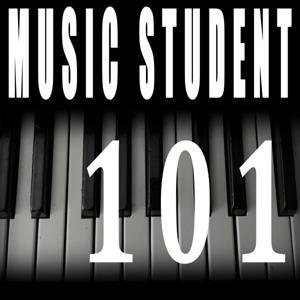Can a return to beauty save music?
Okay I know you’ve just started reading this, but please stop (temporarily), then go and listen to the second movement of J.S. Bach’s Orchestral Suite No. 3 in D major. Its nickname is “Air on a G String”, so just search for that. Even if you know this piece, please go and listen to it again. Then come back. I’ll wait…
So how do you feel now? Calm and cleansed, right? It’s like a warm, relaxing, musical bath. That, my friend, is the power of beauty!
It’s only about five minutes of music, but it literally changes our body’s chemistry, which in turn improves our mental and physical health. In five minutes! And all we have to do is close our eyes and listen.
If you’re like me, you’ll now have two questions on your mind. Firstly, if five minutes of beautiful music can make us feel that good, then why don’t we listen to more beautiful music? And secondly, why is almost all music nowadays so ugly?
The answer to the first question of why we don’t listen to more beautiful music is that we live in a culture of non-stop stimulation, so the peace that emanates from beautiful things feels boring to us. That’s why most people prefer looking at screens rather than trees, and listening to podcasts rather than birds. This need for constant stimulation is why the world is overrun with phone zombies, or phombies, as I like to call them.
When I was growing up in the ‘80s, people were told to stop and smell the roses because the pace of life was getting faster and faster. Nobody seemed to have time for the simple pleasures anymore, like enjoying the beautiful scent of a flower.
In those days people at least saw the roses, even if they didn’t stop to smell them. However, these days the only roses most people see are in their social media feeds. The non-stop stimulation from phones is addictive. Beauty doesn’t stand a chance!
Subscribe to get the latest posts in your inbox.
Now, the answer to the second question is that most music is ugly nowadays because it’s way easier to grab and hold people’s attention with shocking things. So, it’s inevitable that in this age of never-ending content for people to consume, songwriters and producers will use shock tactics to get noticed. That’s why new songs are filled with jarring sounds, abrupt rhythms, and extremely crude lyrics that are programmed into the listeners’ minds via hypnotically repetitive melodies.
So while beautiful music may be able to momentarily catch some people’s attention, the magic of that fleeting moment quickly fades, and their scrolling resumes. And even if they keep listening to the music, it’s relegated to a background soundtrack.
And for the record, I’m not saying that all music should be beautiful. I started my first metal band way back in 1991, so I’ve been making ugly music for decades. Having said that, though, ugly music can (and should) be creative and well written. Also, not all classical music is beautiful. Try listening to the first movement of Schoenberg’s Pierrot Lunaire. It’s less than two minutes, but you need endurance to get through it. I love Schoenberg, and that piece is genius. But beautiful? Definitely not!
So while I do acknowledge that there’s a time and a place for ugly music, it’s obvious from listening to the new releases on Spotify every Friday that modern music has a big ugly problem. The same way it’s obvious from looking at most cities in the world that we’ve got an ugly architecture problem, too. As the world continues to get uglier, we need to listen to more beautiful music as an antidote.
Subscribe to get the latest posts in your inbox.
Here’s where things get nuanced, though. I’m making the case that we need to save music from uglification by restoring its beauty. But, before civilizations developed and made the world ugly, music was not created to be beautiful, it was created to dance to. I don’t mean dancing like we think of it today, I mean dancing as a means to enter a trance. Once the shamans entered this state, they’d communicate with the spirits, heal their tribe members, and do other spiritual work. It’s interesting to note that most hunter-gatherer cultures don’t even have separate words for music and dance. They’re inseparable. They’re one activity.
Therefore, the music of hunter-gatherers is mainly focused on rhythm. The melodies are usually simple, and harmony is usually non-existent. This fascinates me, as these are humans living naturally, the way we’re all supposed to be living. So why is their music not focused on beauty? Here’s my current hypothesis: They’re living in nature, permanently immersed in natural beauty made by the Creator, therefore they don’t need any more beauty, especially not inferior man-made beauty.
Hunter-gatherers are humans in the wild. City dwellers are humans in a zoo. We’ve imprisoned ourselves in an artificial environment, and we can feel it. It’s an unconscious awareness for most people, but we all know it. Hence why so many of us living in zoos, sorry, I mean… cities, tend to be anxious, stressed, lonely, and depressed. Just like zoo animals will never be as happy and healthy as wild animals, we will never be as happy and healthy as hunter-gatherers.
Because they’re living naturally, they don’t need to relieve stress and anxiety by closing their eyes and listening to Bach’s Air on a G String. Unless they’re being chased by a hungry animal, they’re always calm and relaxed. By the way, if you’re interested in learning more about this topic, I highly recommend reading Civilized to Death: The Price of Progress by the psychologist Dr. Christopher Ryan. As with all books, I don’t agree with everything in it, but this is one of my top 5 all-time favourite books, and I’ve read mountains of books! If I was rich, I’d buy thousands of copies of this book to give to everyone I meet.
Subscribe to get the latest posts in your inbox.
Anyway, while it’s far more fun talking about hunter-gatherers than talking about ugly modern music, it is to this regrettable topic that we must now return. So, in order for civilized humans to be happy and healthy, we need to make our human zoos (i.e. cities) as beautiful as possible. Attractive architecture, tree-lined streets, and green parks in every neighbourhood are ways to visually improve a city’s beauty. But even with all those improvements, they’re still noisy. And city noise is ugly. Very ugly!
Psychologists tell us that all humans are born with only two fears: the fear of falling, and the fear of loud noises. We forget this, though. And as a result, noise is probably the most underrated cause of stress and anxiety for us zoo humans, sorry, I mean… city dwellers. Also, it’s not just outside noise that causes stress and anxiety, it’s all the inside noise, too. The humming fridges, furnaces, boilers, heaters, air conditioners, computers, and all the other buzzing appliances that all come together to make a constant noise that unconsciously distresses us.
I know this is the second time I’m asking you to stop reading (which can’t be good for business), but nonetheless, please stop for a moment and listen to the noise wherever you are. It’s shocking how noisy our inside environments are, right? Then on top of all that inside noise, we also hear all the outside noise from vehicles and aeroplanes. It’s no wonder we’re stressed and anxious all the time!
And that’s why I’m inviting you to start listening to more beautiful music. We can’t control most of the noise in our environment, but if we fill the air with beautiful music, it transcends the noise and transforms the energy in our space. And remember, music changes our actual bodies. The physiological enhancements we experience are as real as those we get from exercising or eating healthy foods.
Filling an environment with beautiful music works outside, too. I remember when I was living in London, there were experiments being done where they played classical music in and around a few train stations that had high crime rates. It ended up being so effective at lowering crime that they rolled it out to 64 stations. And this technique went on to be copied around the country by other rail networks.
Subscribe to get the latest posts in your inbox.
All of this makes me wonder if there’s a correlation between the world’s ugliness and music’s beauty. In other words, as the world became more industrialized, did people start making music (and art) that was more beautiful as a way to counter the uglification of the world?
If we look at the music being made through the first industrial revolution, which began roughly in the mid-18th century and lasted until roughly the mid-19th century, I would argue that it’s by far the most beautiful music ever made! For example, Mozart’s entire life fits neatly into this period. This was the time when our ancestors went from living and farming in the beautiful countryside, to working in ugly factories in ugly cities. They gave up their peace and fresh air for stress and smog. And this total transformation happened within a few decades.
Eventually city-living became the new normal, though, and that’s probably why music became less beautiful. You see, our ancestors who lived through that destruction knew that beautiful music was the antidote to industrialization and its resulting uglification. But after a few generations, the old way of life was forgotten. And when we don’t see the ugliness anymore, we don’t seek out an antidote to it.
Now more than ever, it’s essential that we bring as much beauty as possible into our daily life. And the only thing better than listening to beautiful music, is writing beautiful music. The feeling we get from making something beautiful is second to none! So it goes without saying, but in these mad times it’s worth saying again and again: getting AI to regurgitate a song for you (that it’s Frankensteined together from existing music) will not nourish your soul. Create your own beauty!
So, I offer you a free PDF that will teach you how to write a beautiful (and relaxing) piano piece. It’s like a musical recipe. You simply follow my 7-step method, and by the end of the PDF, you’ll have your very own piano piece.
Free PDF Download.
Also, you don’t need to play the piano, you just need a digital audio workstation. If you’re new to making music and you don’t have one yet, you can get started now by downloading a free version.
Lastly, I don’t paywall any of these posts, as I don’t want to exclude anyone. So if you can spare a few bucks, please consider becoming a paid subscriber. It’s only the cost of one coffee per month for you, but if enough people join, I can pay the rent and keep helping you. If you’d prefer to make a one-off donation, though, that’s awesome too. I’m deeply grateful either way!
To get involved, head on over to HackMusicTheory.com/Join. A heartfelt thank-you for your support, and welcome aboard the Songwriter’s Ark, where all the music making skills are being preserved through this global AI flood. The flood shall pass. The skills will last.
Ray Harmony :)




































